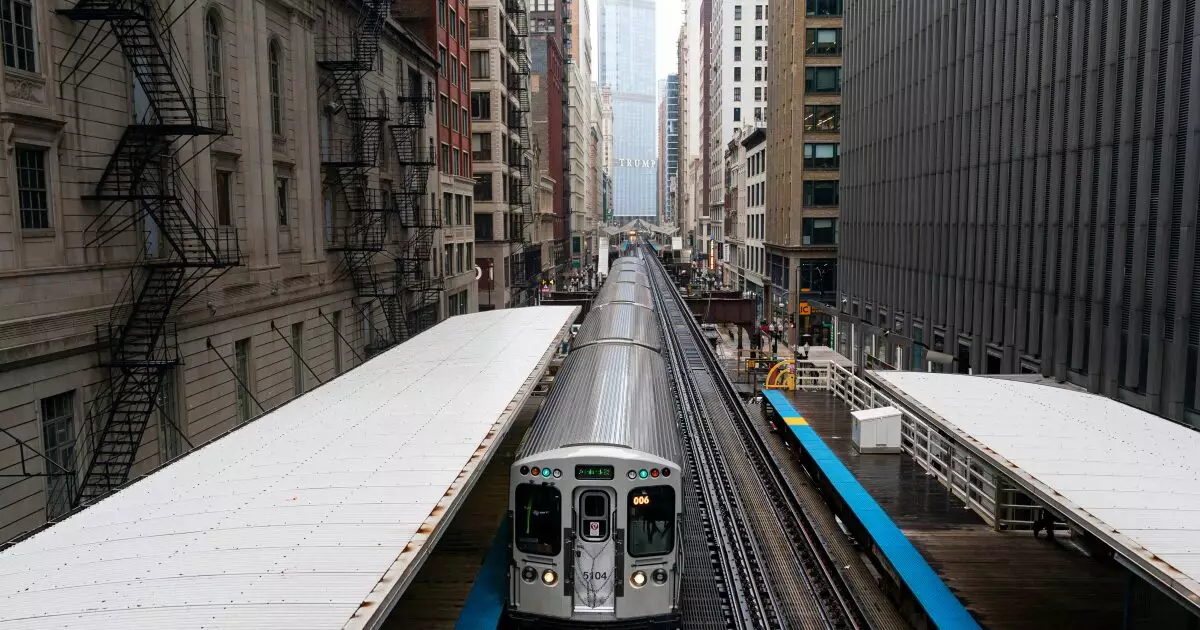Chicago’s public transportation system, the Chicago Transit Authority (CTA), is facing an existential crisis as outlined by Moody’s recent credit ratings report. The contrast between operational requirements and financial reality sets the CTA on a precarious path. Affirmed with an A1 rating while its outlook shifts to negative, one can’t help but question the sustainability of a transit system that is heavily reliant on dwindling federal pandemic relief funds. As the CTA is projected to stare down a staggering operational deficit of $550 million by fiscal 2026, this predicament underscores a glaring failure in fiscal management and strategic planning.
Let’s not mince words: allowing a supposed lifeline, meant for a global emergency, to become a crutch paints a dismal picture for the CTA’s future. Treading water by relying on these federal funds is merely postponing the inevitable reckoning. The CTA’s leaders must acknowledge that today’s apparent stability is merely a façade, and without corrective measures—be it new taxes or innovative state aid—the system will plunge into a budgetary abyss.
A Doomed Dependency on State Action
One of the bold yet worrisome traits of modern governance is the habitual default to requesting state support whenever local finances are shaky. As inferred from Moody’s analysis, Chicago is no exception. The state of Illinois has been largely indifferent to the urgent financial needs of the CTA, evidencing a long-standing marriage of convenience between local governance and state intervention, which now seems increasingly dysfunctional.
Notably absent from discussion is the acknowledgment that dependency on the state can lead to stagnation in innovation. Transit systems across the United States may have benefited from increased state funding since the pandemic; however, this reliance restricts agility in decision-making. Legislators are floating proposals tied to governance reforms while CTA leaders are hesitant—this is utter folly. Reform is essential, yet glossing over governance difficulties while pleading for state handouts is a self-serving defense mechanism that does not serve the public’s best interests.
Bridging the Gap: Fare vs. Tax Revenue
When the conversation transitions to bridging the anticipated $550 million budget gap, one must ponder how fare increases that do not align with ridership trends could possibly be a solution. Moody’s prediction that revenue derived from fares won’t make a significant comeback puts the CTA at a crossroads. They face the uncomfortable truth that, post-pandemic, many riders have shifted preferences and behaviors. Not only is it imprudent to increase fares; it’s unrealistic, for it might drive away riders even further—sustaining a vicious cycle of declining revenues.
Tax revenue, on the other hand, poses its challenges. The looming proposition of new or expanded taxes is laden with political risk. In a city already grappling with substantial economic impediments, persuading a taxed populace to accept yet another burden is a Herculean task. The misalignment of public sentiment regarding taxation and the urgent need for revenue generation requires a new narrative that resonates deeply with the constituents of Chicago.
The Future of Governance: A New Metropolitan Mobility Authority?
The current discussions swirling around eliminating transit boards in favor of establishing a Metropolitan Mobility Authority appear enticing but need thorough examination. The new authority’s promise of streamlined governance comes with the pressing question of its effectiveness. Will it simply become an oversized bureaucracy, creating more red tape rather than eliminating the existing inefficiencies?
The response from the Regional Transportation Authority suggests a more cautious progressive approach advocating for significant funding and broader control over fare policies and private sector collaboration. However, opportunities for innovation through public-private partnerships should not be overshadowed by governing bodies that refuse to adapt to new fiscal realities.
Ultimately, the CTA’s current trajectory is unsustainable, wholly reliant on an archaic infrastructure that struggles to meet modern demands. A transformative blueprint to restore Chicago’s transit services is necessary—one that addresses governance and funding strategies while embracing the nuances of a post-pandemic landscape.
The CTA must shed its dependency on external handouts and equip itself for a more self-sufficient, forward-thinking future. Time is ticking.

